Where is the market headed?
The market today had an extremely flat session. Nothing much happened, and there wasn’t any significant movement to speak of. Despite the lack of action, today we’re going to dive into small cap trends and explore some shocking small cap statistics that you definitely shouldn’t miss. These numbers might just open your eyes to the reality of passive small cap investing.
Market Overview
As mentioned, it was absolutely flat. Nifty closed with a 0.00% change—literally the same close as yesterday. However, it still hasn’t managed to close the previous day’s gap. The market seems to have strength but isn’t currently ready to move up.
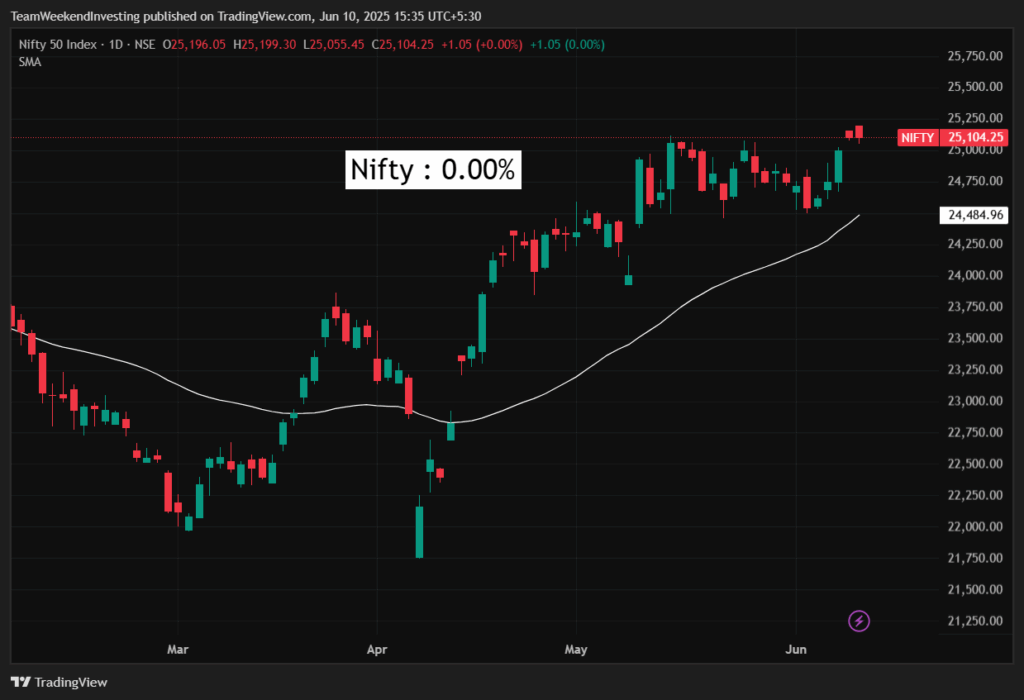
Nifty Next 50
Nifty Junior was up by 0.11%, which is still quite flat.
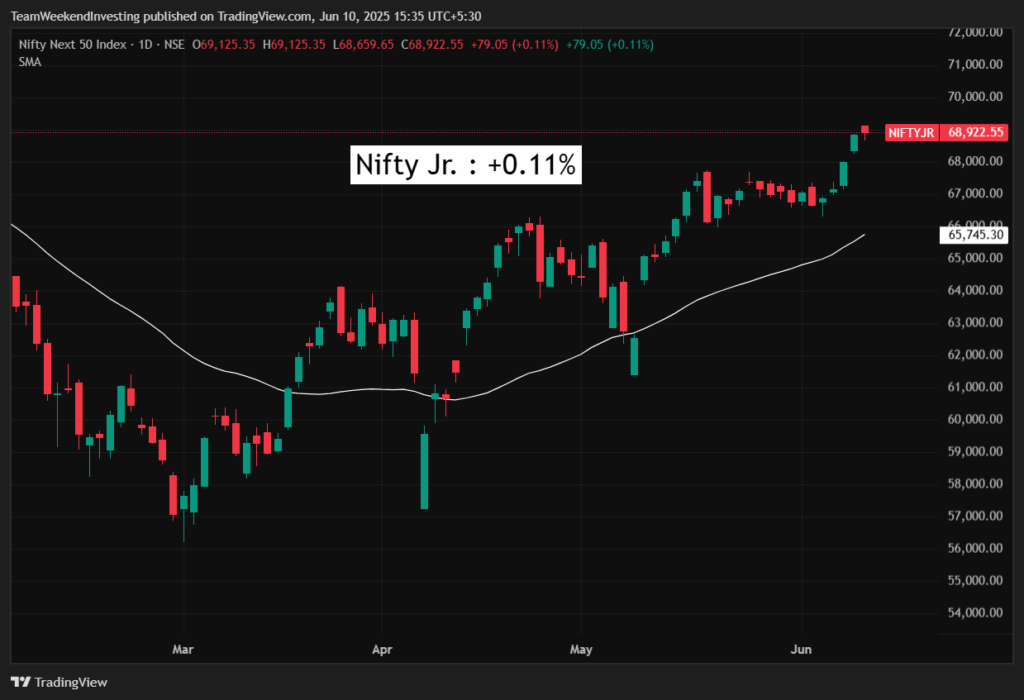
Nifty Mid and Small Cap
Mid caps rose by 0.03%. Small caps rose by 0.17%.
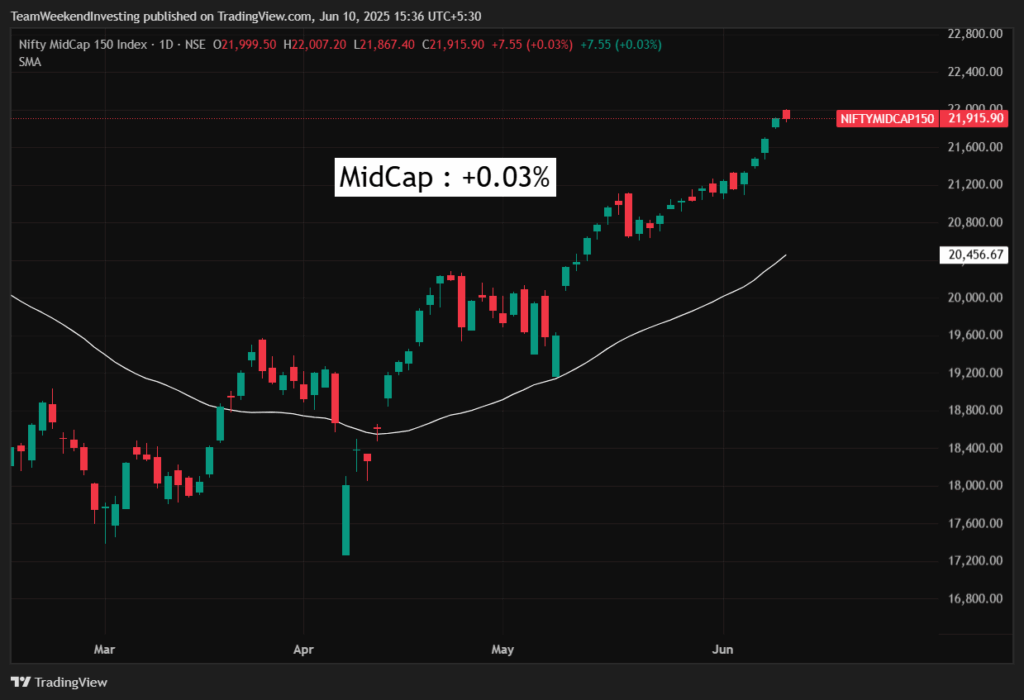
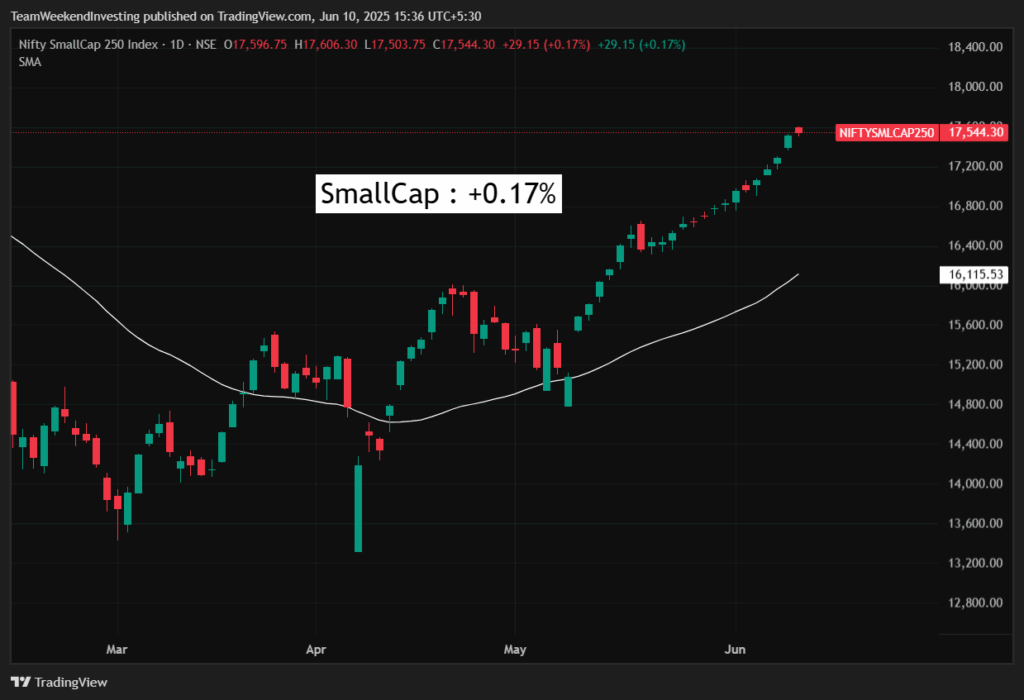
Bank Nifty
Bank Nifty actually lost 0.37%. Interestingly, Bank Nifty has closed the gap.
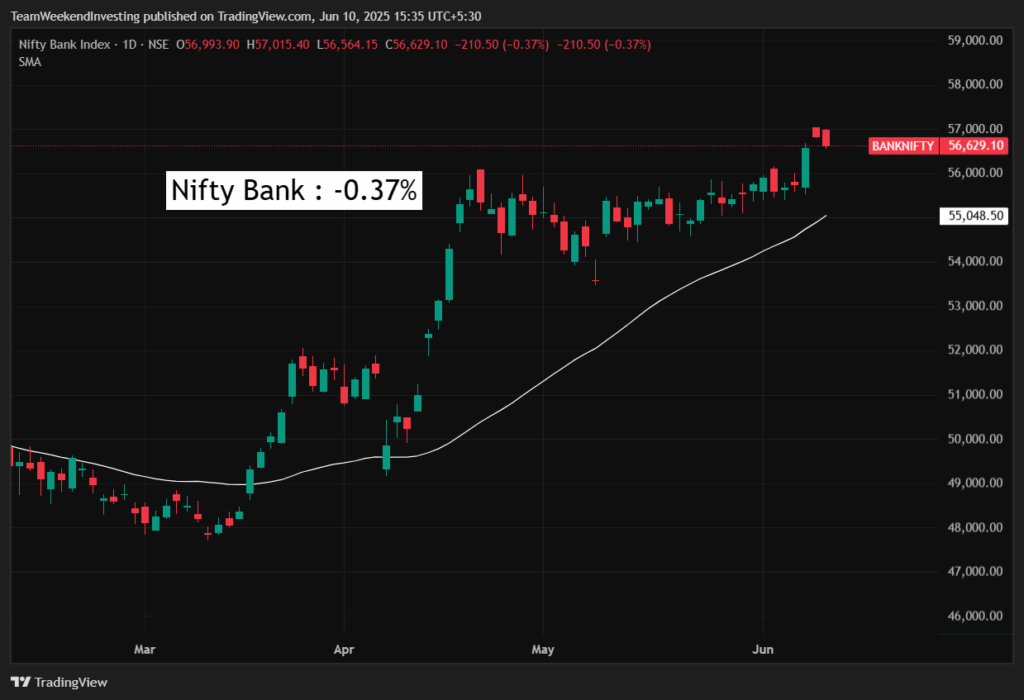
GOLD
Gold was up marginally by 0.04%, stabilizing near ₹9,700 per gram and hovering around its moving average. It seems to be waiting for the next big cue. The likely catalyst for both gold and emerging markets like India would be a potential Fed rate cut. While expectations for the upcoming June Fed meeting suggest there will be no rate cut, any shift in that outlook could lead to a surge of liquidity in these markets.
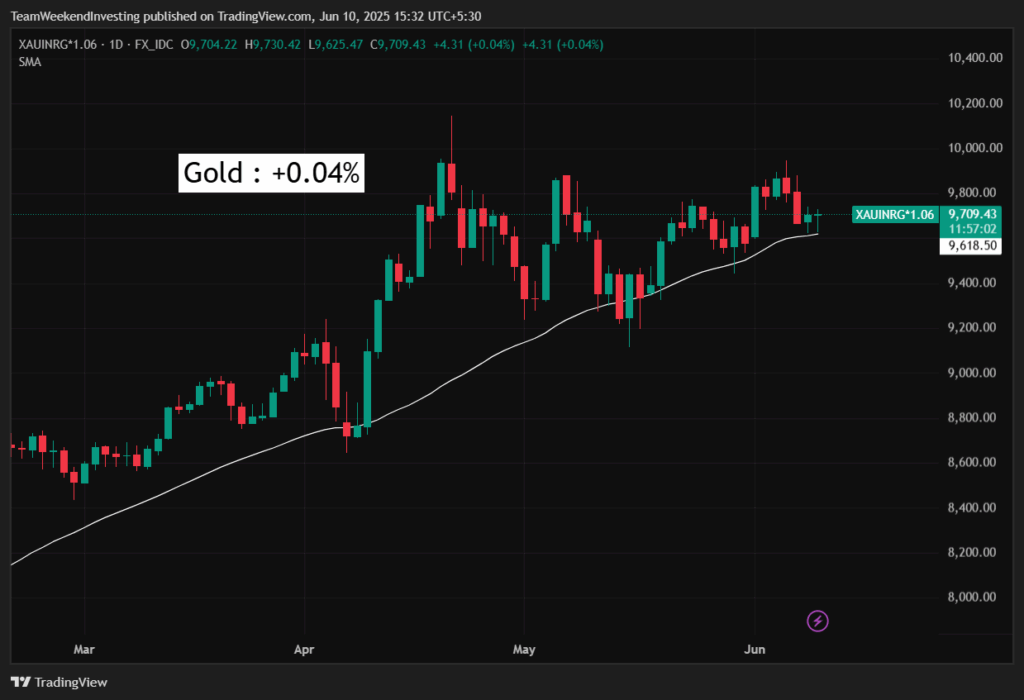
Advance Decline Ratio
The advance-decline ratio shows stabilization after the morning open, with little change since. In fact, gainers lost a bit of ground as the day progressed. The final count stood at 240 advances to 258 declines.
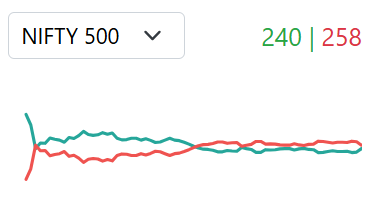
Heat Maps
In the Nifty heatmap, some of the stocks that had seen recent gains lost ground today. Maruti, Mahindra & Mahindra, ICICI Bank, HDFC Bank, the Bajaj Twins, Reliance, and Asian Paints were among the laggards. On the flip side, Tata Motors gained 2%, Grasim rose 3.3%, and Tech Mahindra along with other IT stocks were in the green. Axis Bank, ONGC, and Dr. Reddy’s also posted gains.
In the Nifty Next 50 segment, Adani stocks saw significant moves. Power stocks were especially strong, with Tata Power, Adani Power, and several others making notable gains. Hindustan Aeronautics saw an uptick after a lull, and LTIMindtree and Havells also moved up. Real estate stocks that had surged recently paused for profit-taking. DLF, Lodha, and other interest-rate-sensitive stocks also pulled back after recent runs. Names like Indigo and D-Mart also saw some downside.
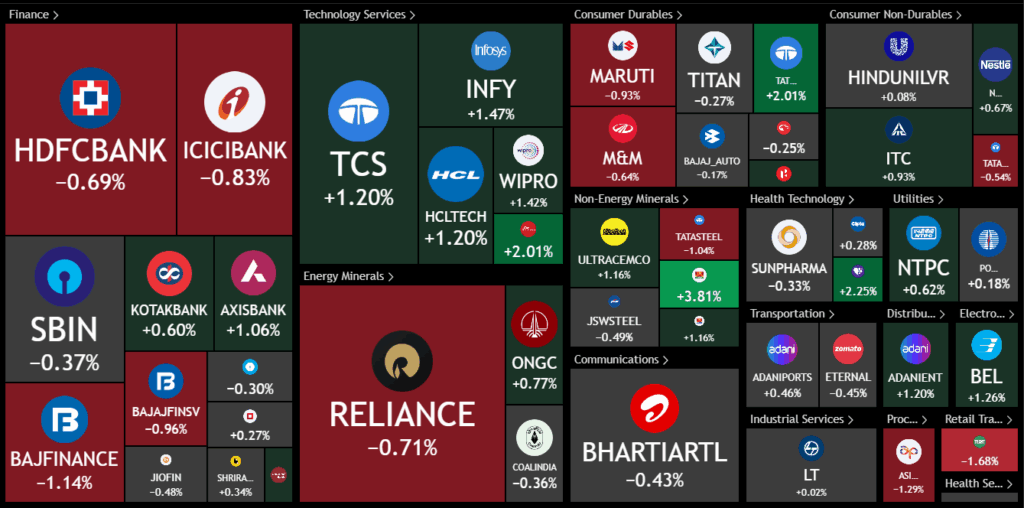

Sectoral Overview
Looking at sectoral trends, IT stocks were the standout performers, jumping 1.7%. There seems to be a short-term sector rotation at play. Defense stocks also moved up 1.1%, while real estate dipped 1.1%. Pharma and commodities rose by 0.6% and 0.5%, respectively, whereas capital markets slipped by 0.6%.
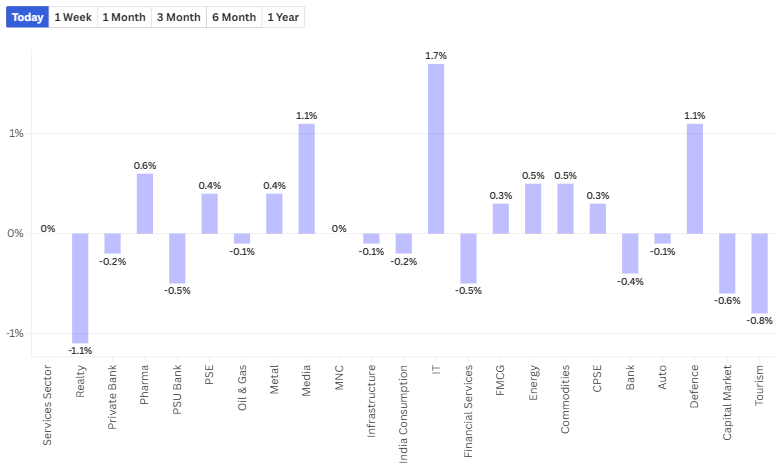
Sector of the Day
Nifty IT Index
What’s more interesting is that within the IT space, it’s not the large caps leading the rally, but the mid-cap IT names. Oracle, Emphasis, Persistent Systems, LTI Mindtree, and Coforge stood out.
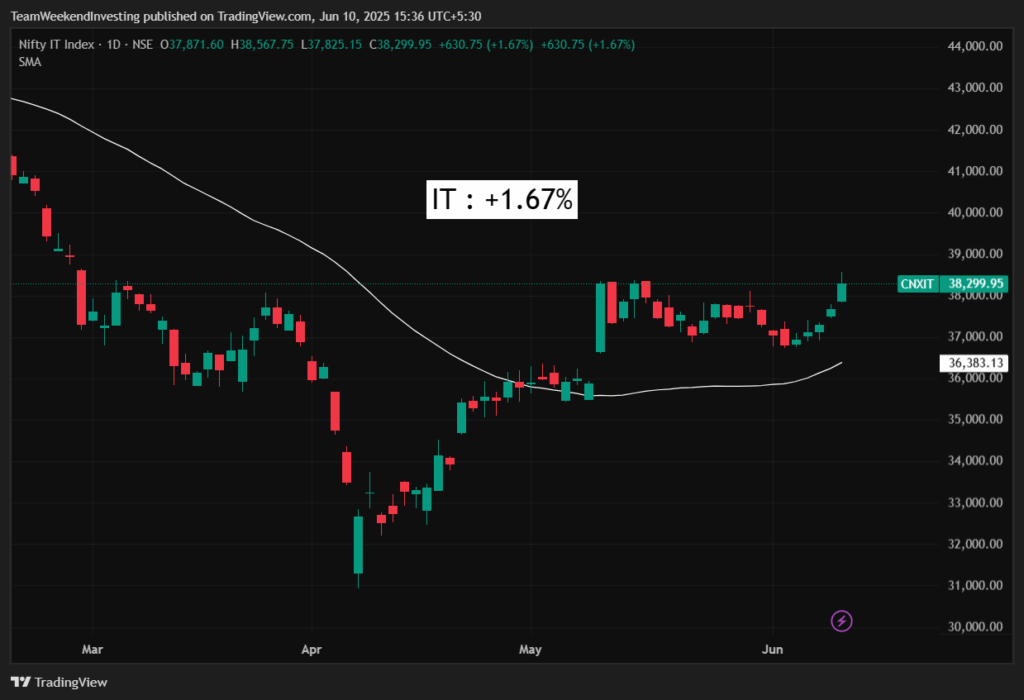
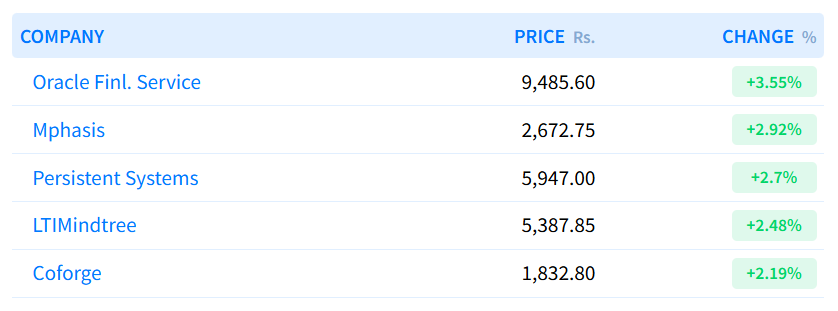
Story of the Day: The Reality Check – Bhav Bhagwan Che
From the March 2025 bottom, small caps have outperformed in the short term. The CNX Small Cap Index is up 28%, compared to mid caps at 23%, large cap CNX100 at 14%, and gold at 13%. This recent performance begs us to look at similar periods in history when small caps have led.
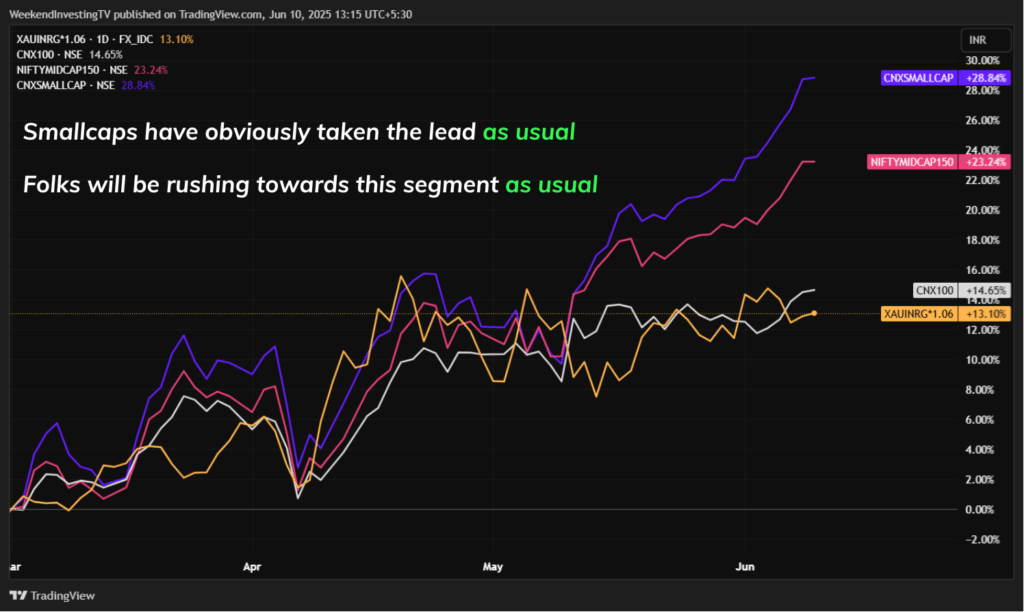
People often flock to small caps in hopes of capturing mega alpha for their portfolios. However, when we dig into the data, some charts are downright unbelievable. Since 2006—chosen because mid cap index data is available from that year—small caps are up 716%, while the large cap CNX100 is up 776%, and mid caps are up a whopping 1350%. Gold, meanwhile, has delivered a consistent 1033% return.
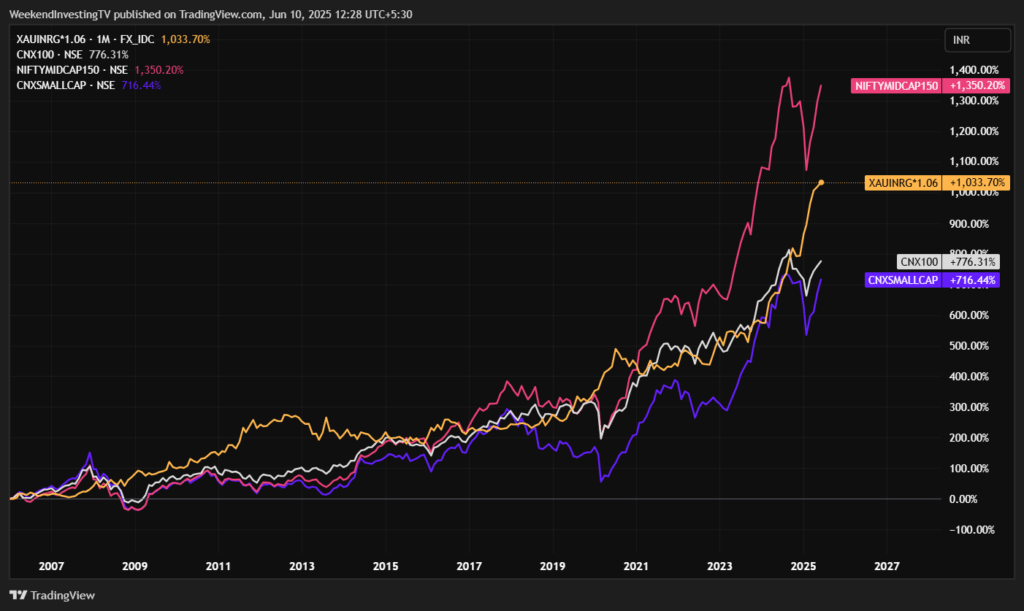
It’s worth questioning why investors chase small caps instead of mid caps, especially considering the latter’s better long-term returns. Are investors gambling with small caps, assuming outsized returns?
Between 2006 and 2024, we looked at year-on-year performances of each asset class. Small caps topped the charts in 2006, 2007, 2021, 2023, and so far in 2024 and 2025.
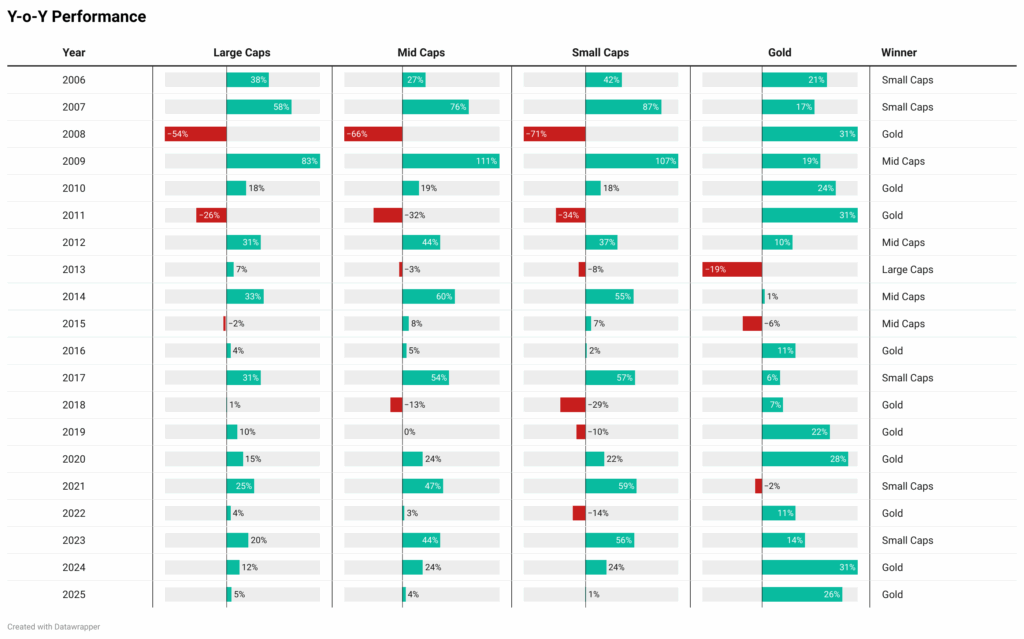
That’s five times. In comparison, mid caps topped fewer years, yet have delivered significantly higher returns overall. Gold has topped performance more times than any equity segment but isn’t today’s focus.
So how often have these segments ranked number one? On a one-year rolling basis, small caps outperformed in 25% of the periods we looked at. But on a 3-year rolling basis, small caps never came out on top. The same is true for 5-year, 7-year, and 10-year periods. They had zero top ranks.
Mid caps, on the other hand, dominated the longer timeframes—53% on 3-year, 67% on 5-year, 77% on 7-year, and 73% on 10-year rolling periods. Large caps barely registered in any long-term rankings.
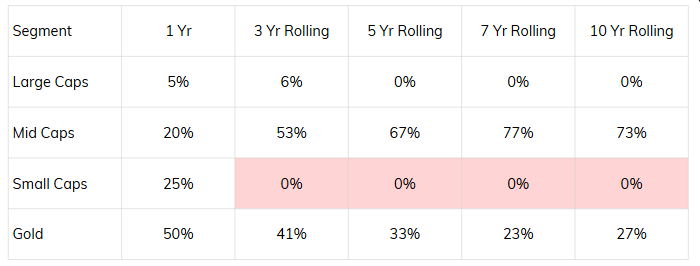
Gold had decent showings: 41% for 3-year, 33% for 5-year, 23% for 7-year, and 27% for 10-year rolling periods.
What this tells us is that while small caps can have explosive short bursts, they do not sustain their outperformance over time. This means timing becomes crucial. They lead the uptrend, as seen in 2006-07, 2009-10, 2014-18, 2020-21, and again in 2023-24. But these periods are followed by intense corrections, where small caps tend to bleed heavily (see the image below).
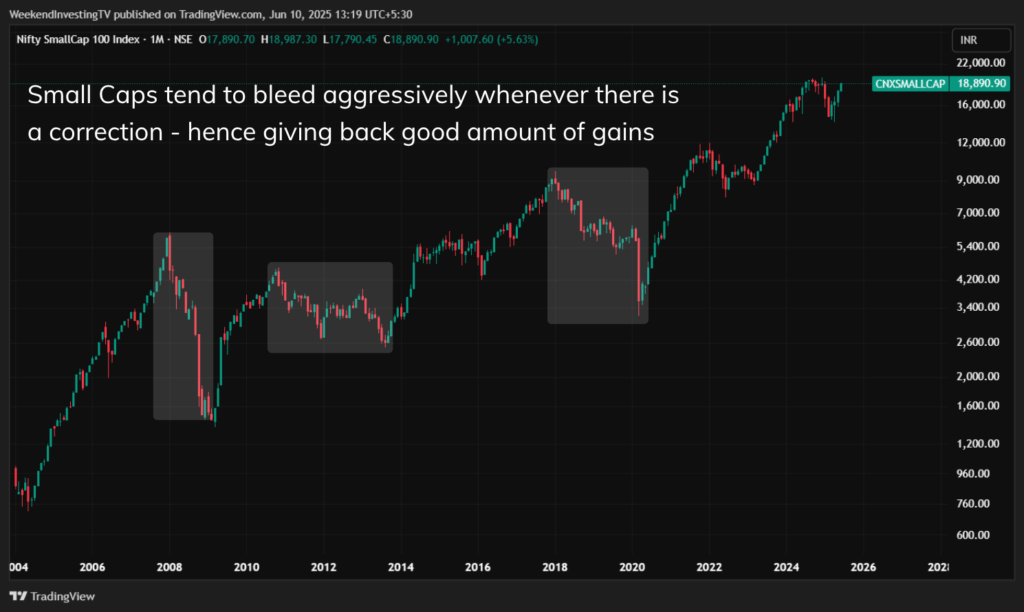
Unless you have a mechanism to avoid these drawdowns, you could end up giving back a significant chunk of your gains. Winning in small caps requires active risk management—knowing how much to allocate, when to exit, how to rotate sectors, and identifying entry and exit points based on trend behavior.
If you blindly stick with a stock or concentrate your bets without a solid exit strategy, your portfolio could suffer badly. The biggest takeaway is this: small caps will lead during uptrends, but you may lose all your gains—or even your capital—if your strategy lacks proper risk management.
Don’t gamble on small caps based on the assumption that small companies will always grow into larger ones. Often, the small caps that perform well graduate into mid caps and leave the index altogether. So having an active strategy is key to capturing those opportunities and turning them into meaningful gains.
Let us know in the comments if this analysis resonated with you. How much small cap exposure do you currently have in your portfolio? Do you invest based on a defined strategy?
Thank you so much for reading. Please like and SHARE this post with your friends. See you next time.







